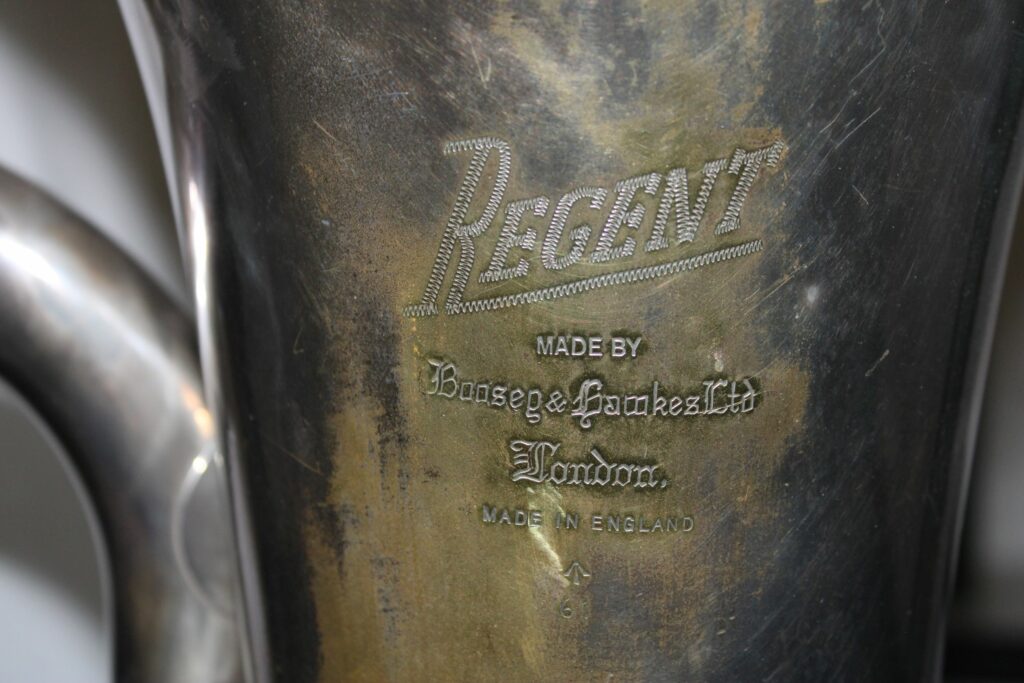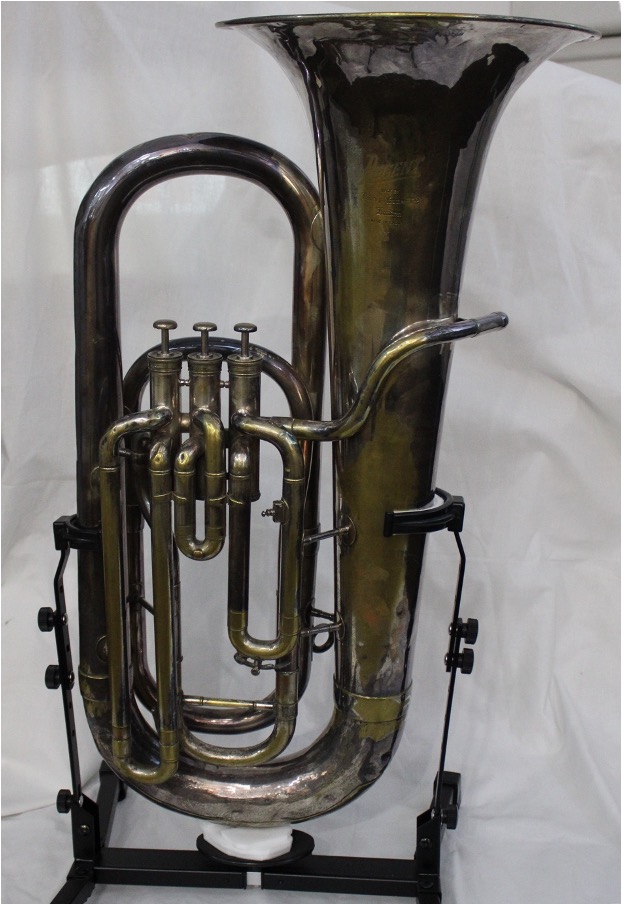The euphonium was invented in the 1840s and since then has formed an essential part of the brass section in many types of bands and orchestras. It is a smaller version of the tuba, playing in the higher bass clef range (to the left of the middle of a piano keyboard), yet it still provides that mellow and rich timbre of a lower brass instrument whilst covering five octaves – a significant range considering a standard piano consists of seven octaves.

The unique sound and treble range of the euphonium results in it often being chosen for solo passages in bands which is reflected in the meaning of the word euphonium as ‘sweet-sounding’. The euphonium has found particular favour with military bands, especially marching bands. Many modern British Army bands such as the Grenadier Guards and Coldstream Guards use euphoniums alongside other brass instruments to fill in the treble and create a fuller brass sound. This may include smaller members of the tuba family such as the baritone and tenor horn, the former can be seen in the back two rows of the band photograph from 1905.

The euphonium in our collection is from the Light infantry and estimated to be early 20th century. It is operated by three valves which are the pistons which direct the air through different length tubes to create different pitches. However, players often prefer the four-valve version (the fourth valve being played with the thumb of the left hand) as it increases the lower range of the instrument. This Regent model is made by Boosey & Hawkes, a manufacturer which remains popular amongst lower brass players; I myself own a Besson Sovereign Eb tuba of a similar period to the euphonium which I have played for over ten years (Besson being taken over by Boosey & Hawkes).
In the collection we hold the sheet music for a euphonium part used by the 2nd Battalion Band of the DCLI. The piece ‘Reminiscences of the Plantation’ by American Composer, bandmaster and cornet soloist William Paris Chambers (1854-1913) was written in 1898. Chambers combined ‘songs of the south’ to create this arrangement for full military band. This piece is no. 274 from Chappell’s Army Journal, a large volume of military music.


The photograph depicts the 2nd battalion band DCLI in 1905. You can see a range of instruments in the tuba family including the helicon on the far right – similar to a sousaphone – it is a tuba that wraps around the player’s body. One euphonium player is seated on the front row in front of the helicon and the other in the middle of the second row, choosing to adopt a playing pose! From this photograph it is difficult to distinguish the different tuba family instruments as the size difference is minimal and varies across models and makes. For example, the tubas in the front two rows on the left are larger than the euphoniums on the right, however, the euphoniums may in fact be smaller tubas in a different key. However, despite this, we can still appreciate the role of the euphonium and the larger brass section within the military band.

